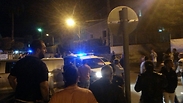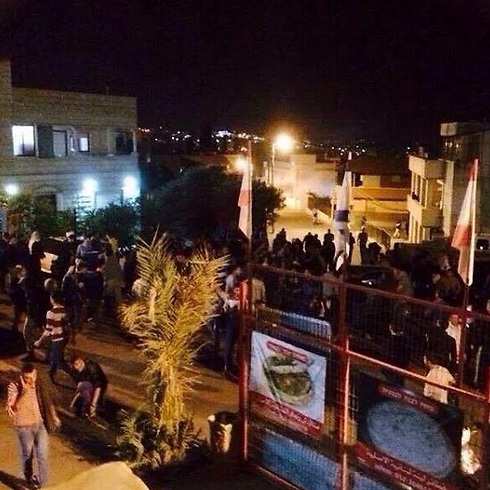
An explosion waiting to happen in Abu Snan
Op-ed: The juxtaposition of patriotic Druze minority and a Muslim majority in this Galilee town, coupled with a turbulent local history, makes for a tempestuous situation.
Upon first glance, the immediate cause of the riots in Abu Snan was a conflict between youths over disrespectful talk about girls. Another reason is the keffiyas that Muslim students wore to protest the killing of Khair Hamdan in Kafr Kanna. The black and white keffiyeh is a traditional headdress of the residents of our region, but almost all of Israel's Arab citizens are influenced in their dress by Western culture. Yasser Arafat transformed this swatch of cloth into a Palestinian national symbol.
Last week, MK Dr. Basel Ghattas, a secular Catholic with a Marxist background, wanted to annoy the Jewish Knesset members, and draped a keffiyeh around his neck. Predictably, this caused Miri Regev's gorge to rise, and she demanded that he be put on trial for provocation. For an act to be deemed a provocation, there has to be conscious cooperation between the provoker and the one who understands his intent. A wise man ignores this intent, denying the provoker the satisfaction he seeks, but the trigger threshold of MK Regev is akin similar to the trigger threshold of the Druze and Christian students in Abu Snan.
But both of these reasons mere supposition in the face of a principle. And that principle is rooted in an act that took place 13 years ago, in early September 2001. On that day, a suicide bomber blew himself up in Nahariya train station, killing three people and wounding dozens more.
The bomber had been dispatched by Hamas, and as customary for shahids (martyrs), he left behind a tape in which he explained his intent and motive. Mohammed Shaker Hbeishi was a 55-year-old resident of Abu Snan. A few days after joining his 70 virgins in paradise, a bomb went off close to his widow; this was interpreted as a signal that it was better for her family to leave the village, which had almost no rusticity left.
In fact, in this small town of about 13,000 inhabitants, there live, side by side, Muslims, Druze and Christians. The demographic tilt towards the Muslims has increased over the years, but there is still a large Druze minority. They and some Christians serve in all of the branches of the security forces, and include a couple of senior officers, including Major General Yusef Mishleb, whose roles included Coordinator of Government Activities in the Territories and the Home Front Command.
His neighbor, Colonel Anwar Saab, was deputy commander of the Samaria Brigade during the Second Intifada, the period in which his fellow villager murdered people waiting for the train in Nahariya. I think these life stories clearly show the complex background to the riots that took place there over the weekend.
Often, on my way to my home in the north, I pass the village and see the soldiers and Border Police officers returning for a weekend break, walking around in their uniforms at the mosques, Druze houses of worship and churches. Atop one of the houses flies the Israeli flag.
On my way, north and west on the winding Route 89, it does occurs to me that the writhing history of this place must every now and then rears its head. The War of Independence saw the conquer and destruction of almost all the Muslim villages along this route, after which the Jews settled there. The steps in the mountains, the fig trees, cactus hedges and the few stone houses that were not destroyed demand recognition.
Most of the deportees were exiled to Lebanon, but a few hundred multiplied to become thousands living in communities in the Galilee. The Christian communities survived and of course the Druze communities, most of which had cunning leaders who made a pact with the Jews.
The Christians have invested in acquiring an education and getting out of here, equipped with skills that facilitate emigration to Western countries. The Druze, the descendants of mountain fighters who for a thousand years fended off the Muslim majority, have become mercenaries of the Jewish state.
Their location between a rock and a hard place demands of them a loud and sometimes violent demonstration of Israeli patriotism. The proximity of these communities is an explosive charge whose fuse is easy enough to ignite.











